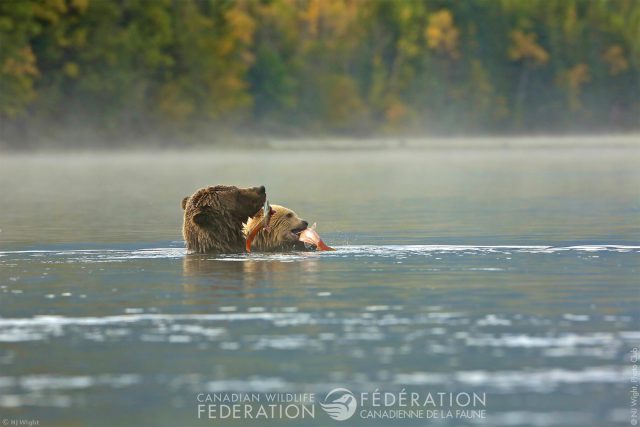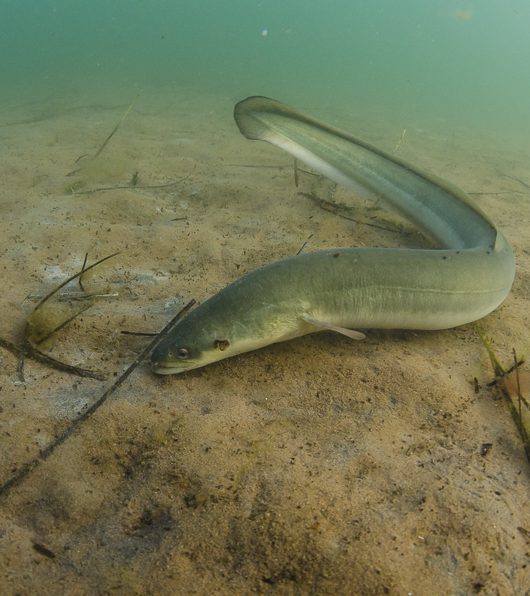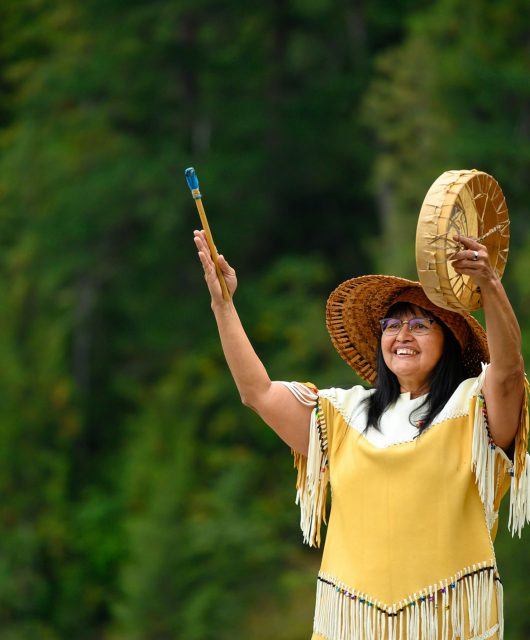Pacific salmon are some of the most iconic fish species in Canada.
Every year, adult pacific salmon make remarkable migrations from the ocean. They swim up coastal rivers to their spawning grounds where they spawn once then die.

There are five species of pacific salmon, and of these, Chinook Salmon (Oncorhynchus tshawytscha) are king. They are the largest of the pacific salmon. Individuals over 45 kg (100 pounds) were once occasionally caught in some rivers, hence the moniker “king salmon.”
Unfortunately, the oldest and largest individuals are disappearing. The exact reasons are unknown. But the fact that humans have targeted and removed the biggest fish for decades is almost certainly a contributing factor.
Five Fun Facts about Pacific Salmon
Here are five other amazing facts about the king of the pacific salmon:
- Chinook Salmon are also sometimes called spring salmon. This name is due to having an early run in May/June and a second run in late summer or fall. In the north, most rivers only support a single run during summer. However, some rivers in California host three separate runs each year!
- Each tributary of a spawning river contains its own genetically distinct population because individuals almost always return to where they were born. The Canadian waters of the Yukon River host 100 different Chinook Salmon populations! Further south where rivers have multiple runs in the same year, the fish in each run almost never breed with each other. This creates even more genetically distinct populations from the same habitat.
- Southern Chinook Salmon and those that spawn in rivers near the ocean produce ocean-type fry that migrate to the ocean soon after they are born. Those spawning in headwaters and in the north are stream types; they overwinter once before migrating to the sea.
- Like some other fish species, two types of males have evolved. Females primarily breed with large dominant males but when they do, smaller males take the opportunity to sneak in and release sperm. Both are successful; therefore their genes are passed on and both sizes persist in the population.
- Chinook Salmon in the headwaters of the Yukon River near Whitehorse make the longest migration of any salmon in North America. They swim more than 3,000 km from the Bering Sea, all the way across Alaska and the Yukon and almost to the British Columbia border.
Climbing the Ladder
In Whitehorse, the Canadian Wildlife Federation is partnering with Carcoss/Tagish First Nation, the Yukon Energy Corporation, Carleton University and several other local First Nations and stakeholders to conduct research on the movements of Chinook Salmon. The Whitehorse Hydro Plant is the only hydroelectric facility on the Yukon River and boasts the world’s longest wooden fish ladder. It has passed fish since 1959! We are working together to understand more about whether it creates a challenge for migrating pacific salmon. Also, we are looking into where fish go after they pass the dam.
For more information on fish migrations and freshwater ecology, visit the Canadian Wildlife Federation’s Lakes and Rivers





